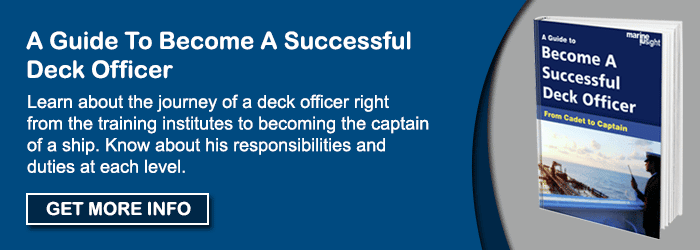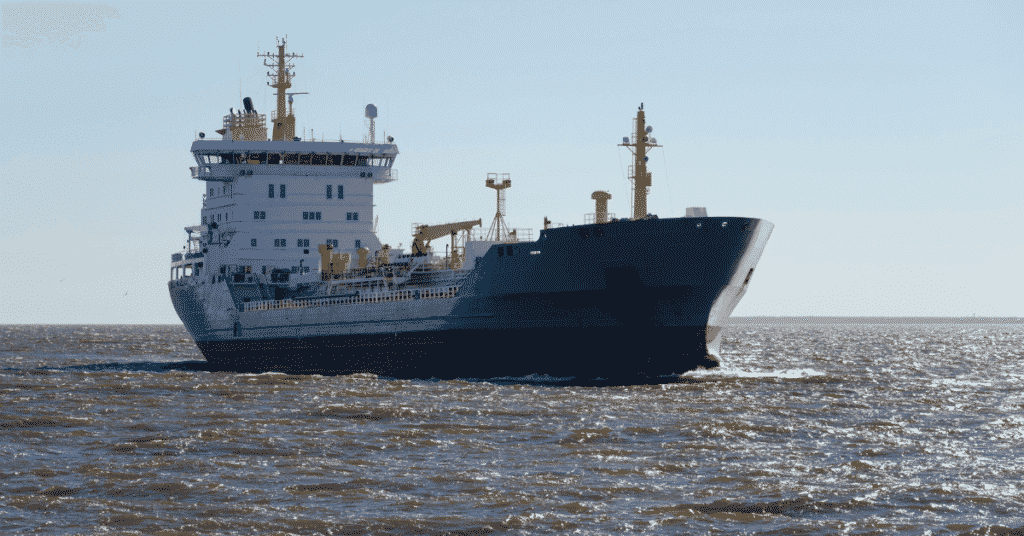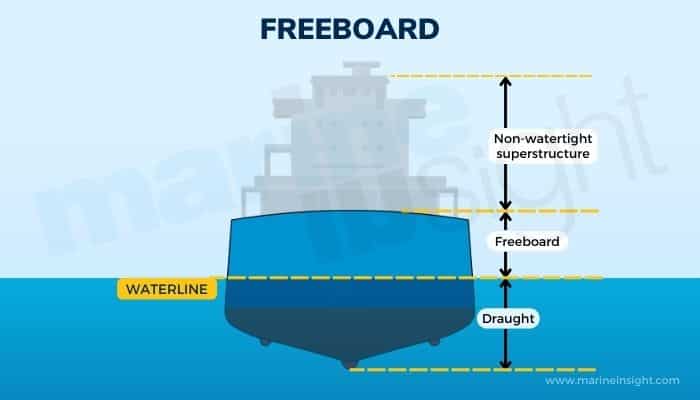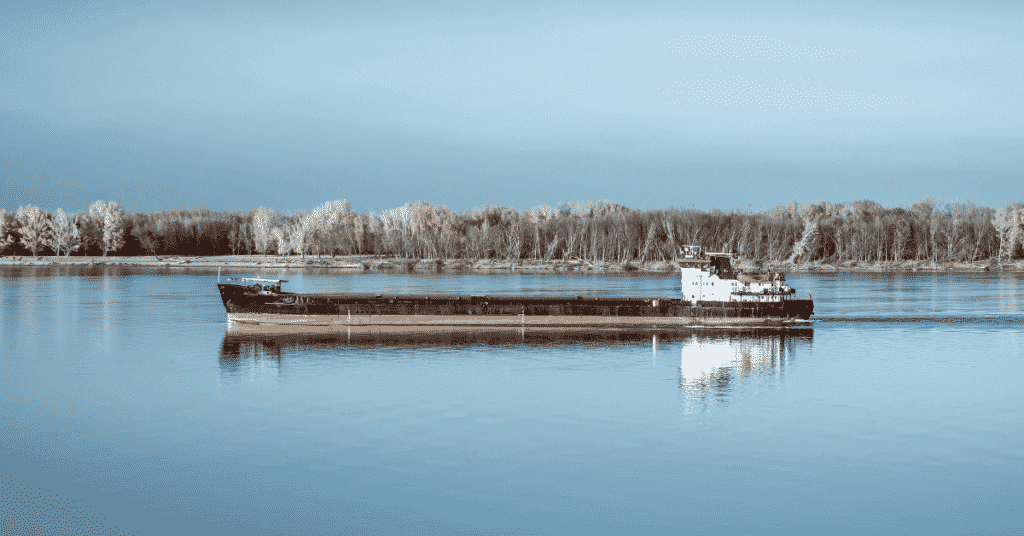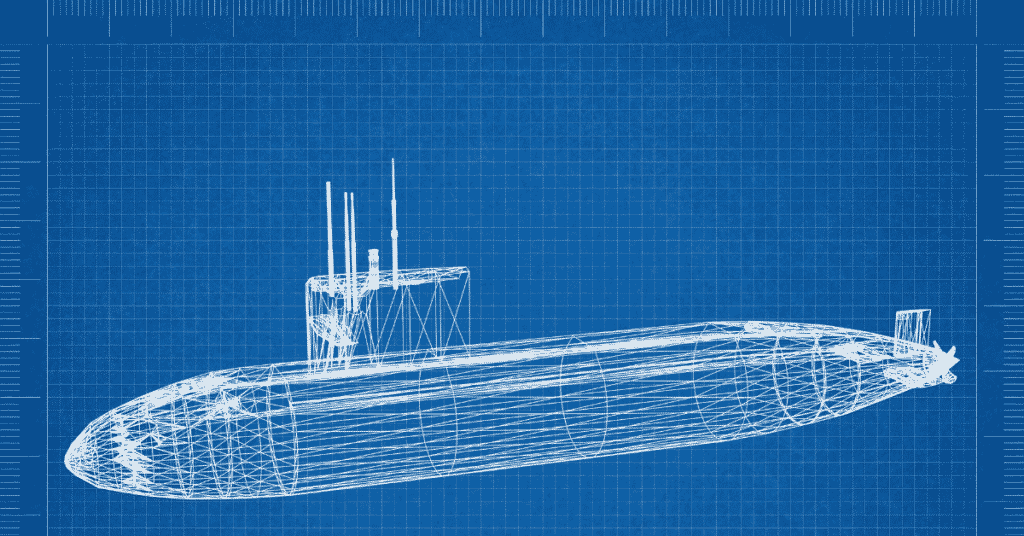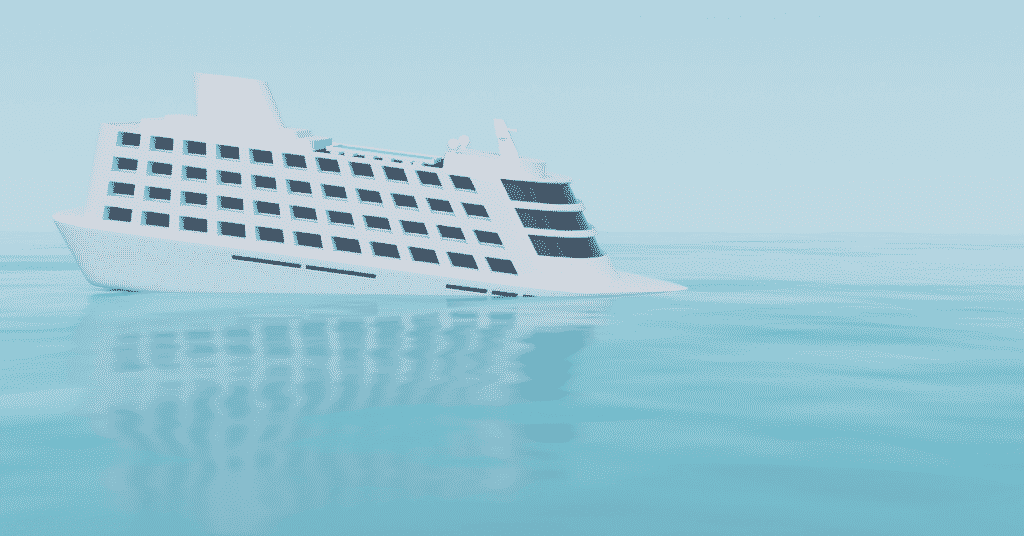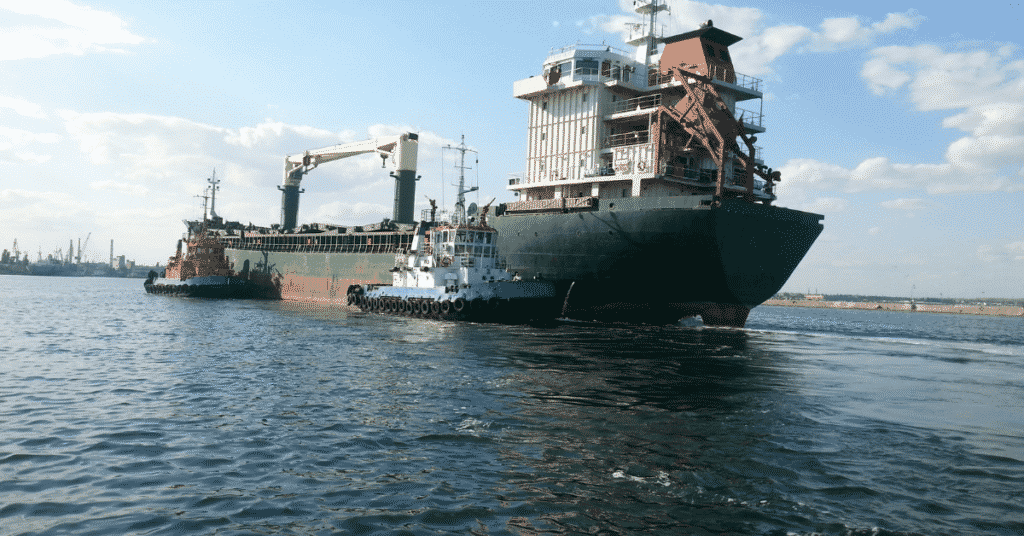Bridge of a Ship – Design And Layout
Ships are massive vessels spanning hundreds of meters in length and weighing thousands of tons. Being able to control and manoeuvre such a large vessel is of paramount importance.
How is it possible for a small crew to operate a ship of such gigantic proportions?
This is where the ship’s bridge comes in.
The bridge is the main control centre of a vessel, from where the captain and officers are able to man the entire operations of the vessel. It is generally located in a position with an unrestricted view and immediate access to the essential areas of a ship.
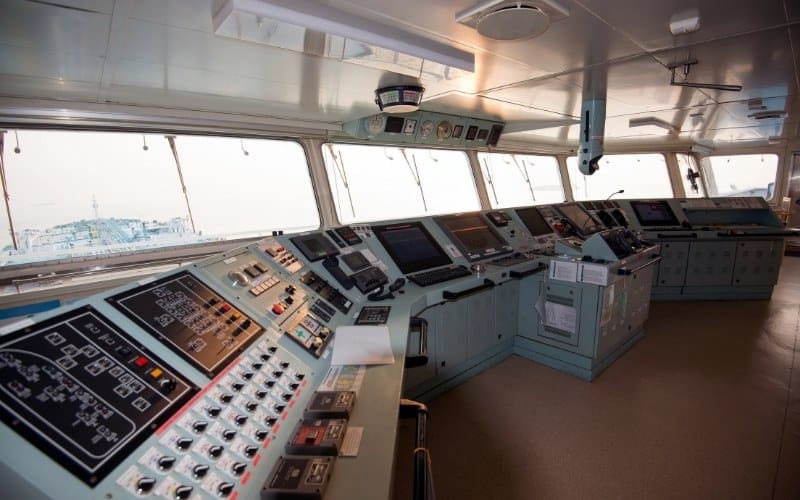
Historically, the bridge was a structure connected to the paddle house that housed the steering equipment. As it closely resembled an actual bridge, this name was given.
Even after paddle wheels became obsolete and were replaced with the latest technological advents, the term “bridge” still stuck. The master of the bridge is always the captain, who retains control and responsibility of the vessel while he is on board.
During the round-the-clock watch, the highest-ranking officer of the watch is generally placed in charge of the bridge. Only authorized personnel are allowed to enter this area and strict operating procedures must be followed at all times.
The bridge of a vessel houses the main steering equipment, navigation charts, communication systems, engine control as well as miscellaneous features. In addition, some bridges also have adjacent bridge wings, that house equipment for the stern and bow thrusters. These wings extend beyond the main bridge room and provide a clear, unobstructed view of the surrounding areas.
The bridge is always manned by an officer of the watch, who has the responsibility of manoeuvring the vessel and coordinating with the engine room. In general, an officer and a lookout are required to be present on the bridge, to prevent any untoward incidents.
For complicated manoeuvres, the captain of the vessel is often called to the bridge to take over controls. And in areas with a high-risk environment, pilots are often enlisted to guide the ship safely using their knowledge of the region. In addition to being the heart of the ship, the bridge is also used as a command centre and important documents are stored here.
The ship’s papers, permits, important documents, passports, cash for emergencies etc. are kept in safe located on the bridge. For this reason, the entrances into the bridge are often heavily fortified and provided with bulletproof glass to thwart pirate attacks.
In this article, we will take a look at the general layout of the bridge, the various components that are found here and the guidelines to be followed.
Layout and Design of the Bridge
The bridge of a ship is intended to be the heart of the vessel and must provide a clear and unobstructed view of the surrounding area. Even though a host of electronic and navigational equipment is found on the bridge, the primary purpose must be fulfilled.
Thus, the bridge is demarcated broadly into two regions- the area at the fore intended for clear observation, and the remaining area for controls and comms.
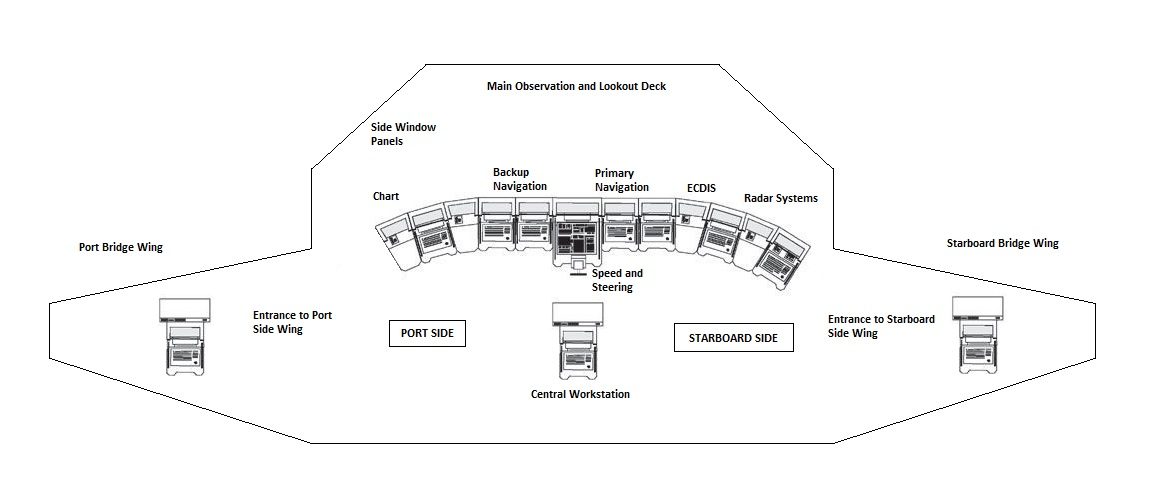
The observation region is enclosed at the fore by large glass panes, built to withstand storms and adverse weather conditions such as hale. Often, plexiglass structures are used and supported on steel or aluminium frames. Shades which can be lowered are also used so that visibility is not reduced when there is a bright light.
Along with the central observation deck, there are also bridge wings. These wings are structures that extend in a transverse manner out of the bridge. Present on the port and starboard side, their primary purpose is to increase the region of visibility, especially during complex manoeuvres such as port docking.
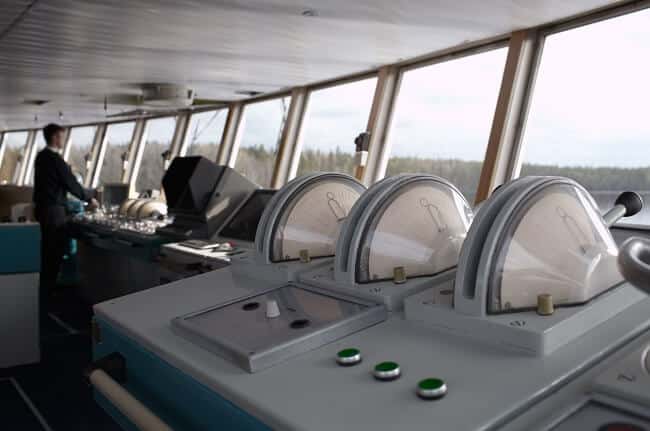
They also house the controls to the individual bow and stern thrusters present on each side. Thrusters are propellers located deep within the hull that provide a higher degree of control to the captain for precise turns and adjustments.
The bridge wings can be either open or closed depending on the type of ship. In most cases, the wings are kept open to allow for maximum visibility. In addition, there is communication equipment found on the wings so that information can be relayed back to the main bridge section. Entry to the bridge wings is restricted to only trained seamen and officers of the watch.
The remaining area of the bridge houses the main navigational, steering and communication equipment. Along with this, there are numerous controls that operate various parts of the ship remotely.
Several internal telephone lines connect the bridge directly to the chief engineer, captain, first officer and the engine room. This enables immediate action based on input from the watch officer.
The control area is built into different console units that are arranged in a semi-circular fashion on all sides of the bridges. This includes radar systems and steering controls that are manned by ship officers.
All equipment used onboard must be IMO certified and must have passed a series of tests intended to check their robust nature and ability to function for protracted periods of time. For safety purposes, fire extinguishers, flares and distress beacons are stored on the bridge.
For anti-piracy reasons, the entire structure is fortified and must pass stringent security checks, especially when sailing through regions such as the Horn of Africa or the Western Indian Ocean region. Although these are hotbeds of criminal activity, most commercial carriers are not allowed to carry firearms or weapons on board.
However, for extreme contingencies, the bridge controls a series of water pumps located all around the ship that thwarts any other vessel from getting too close. Also, special marshals are often hired to provide contracted security and usually keep their firearms on the bridge.
Steering and Engine Equipment on the Bridge
To steer the ship, controls to the rudder, engines and thrusters are present on one of the numerous consoles found in the bridge. Although primary control of the engines rests with the chief engineer or the officer in the engine room, it is an officer from the bridge who often issues commands to the engine room.
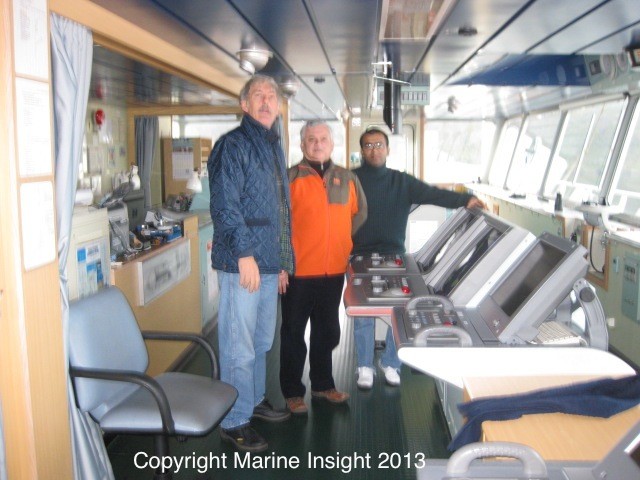
To increase speed, there is an engine telegraph that allows for a variety of speeds and even allows the propellers to be put in reverse. There are often different controls for the multiple engines on board. In addition to the engines and propellers, there are bow and stern thrusters that allow for a higher range of precise movements.
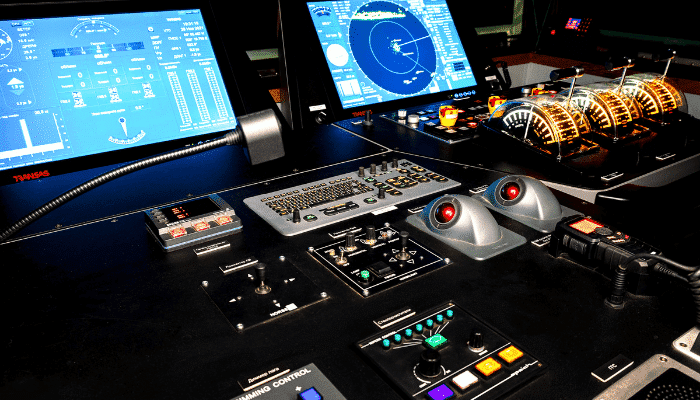
The thrusters are often controlled from the bridge wings so that better visibility is available. Thrusters provide steering as their primary function, as compared to power, unlike the engines.
Steering is primarily controlled through the rudder and thrusters, and the controls for both of them rest with the bridge. The rudder must be able to turn to 45⁰ to both the port and starboard side without colliding against the engines. In the case of azipods or integrated propulsion systems, a larger command centre is often used due to the highly sensitive nature of the equipment.
Azipods are an interesting technological invention that allows conventional engines to be integrated with rudders. Thus, a set of azipods are capable of achieving nearly 100% efficiency by turning in almost any direction. This removes the need for different controls for the propulsion and steering systems. In general, controls for the port side are colour-coded red, while the starboard side is often coded green. This allows for easier control by the officers and seamen.
Navigation and Communication on the Bridge
Navigation is a key component of a vessel that is the only means of getting the vessel safely from port to port. Basic navigation equipment includes a Global Positioning System (GPS), Navtex receiver, Electronic Chart Display and Information System (ECDIS), radar systems and communication channels.
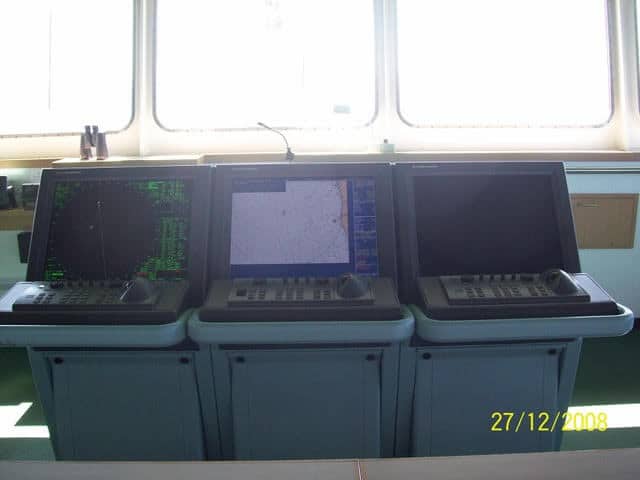
Navigation is often controlled using charts that are used to plot routes. To ensure that the vessel stays on course, a combination of GPS and a compass system are used. The charts and equipment are stored in separate locations to ensure the compartmentalization of the bridge. In addition to this, binoculars are used in the daytime for sighting. However, when the weather is not clear, visibility is low or during the night, the radar must be used to accurately place and navigate the ship.
When using radar, a range scale must be used based on the speed and traffic around the vessel. Ships weighing more than 10,000 gross tons must use two radars for potting their course and navigation.
Automatic Radar Plotting Aid (ARPA), Electronic plotting Aids (EPA) and Automatic Tracking Aids (ATA) are also a must on such vessels. Alarms to warn about impending collisions, equipment failure etc. are also used to indicate errors. In certain zones onboard the ship, indicator lights are used to signal warnings.
Bridge Guidelines and Requirements
When at sea, vessels must maintain the strictest of protocols to ensure SOLAS and IMO regulations. As the bridge controls the entire ship, it is essential that the bridge and all equipment satisfy guidelines. For navigation purposes, the bridge must be located with a clear view both ahead and abeam. There must also be a minimum vision of 255⁰ present for the officer on watch (OOW), with at least 112.5⁰ visibility on both the port and starboard sides.
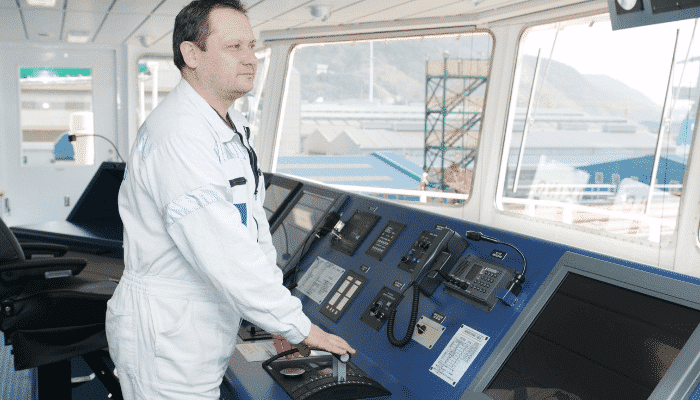
For the bridge wings, the side of the vessel must be clearly visible with 180⁰ on the side and 45⁰ to the opposite side. For the officer in charge of steering, 60⁰ on both sides is the minimum clear visibility.
Ships weighing more than 10,000 gross tonnages must include a single X band – 9 GHz frequency radar. This is according to IMO guidelines for navigation and steering. In case of any contingencies, alarms are positioned at all zones onboard the vessel. These alarms indicate failure of various equipment on the bridge.
In addition, failure or damage from other parts of the ship is also relayed back to the bridge for immediate action. If there is no response from the officer on watch, a backup alarm is signalled after a duration of 30 seconds. This backup alarm is sounded in the offices, mess and cabins indicating a need for assistance.
The Bridge of a Warship
Warships often have a number of bridges that serve multiple purposes. For instance, a navigation bridge houses all navigation-related equipment and charts. It is here that the actual route plotting is completed and relayed to the captain’s bridge. This bridge houses radars that are used for both navigation and military capabilities.
A captain’s bridge is also present, where the captain controls the vessel and the essential components of the warship. When the warship is a central vessel of a fleet or the flagship vessel, it usually has a separate Admirals bridge that is used for strategic and command purposes. Here, the control of the vessel is separated from the control of the vessel. The military staff controlling the fleet are usually housed within this bridge.
Bridge Simulator Systems
The bridge houses extremely sensitive equipment. Being able to successfully sail through a waterbody requires extensive training on the bridge. On average, officers spend years honing their skills before ever being given control of the bridge. In addition, since control over nearly every part of the ship is exercised from the bridge, only trained and authorized personnel are allowed to enter. For training purposes, it is not feasible to give a fresh recruit command over an entire vessel. This is where bridge simulators come into play. They are similar to airplane cockpit simulators but are considerably larger.

Most training institutes have their own simulators that enable recruits to practice on them before actually being deployed onboard a vessel. Several shipping companies also offer specialized simulation software that can be programmed to display a wide range of scenarios.
For instance, MARIN in the Netherlands manufactures and sells various simulation units that project realistic situations to the training officers. A select number of individuals are allowed into the simulator and are allowed to practice. Various types of simulators exist that can be used to test response under different visibility ranges. For instance, although the ideal range of sight must be 270⁰, certain simulators can be programmed to test the ability of the officers to handle a lower visibility range.
Do you have info to share with us ? Suggest a correction

About Author
Ajay Menon is a graduate of the Indian Institute of Technology, Kharagpur, with an integrated major in Ocean Engineering and Naval Architecture. Besides writing, he balances chess and works out tunes on his keyboard during his free time.
Latest Naval Arch Articles You Would Like:
Subscribe To Our Newsletters
By subscribing, you agree to our Privacy Policy and may receive occasional deal communications; you can unsubscribe anytime.



